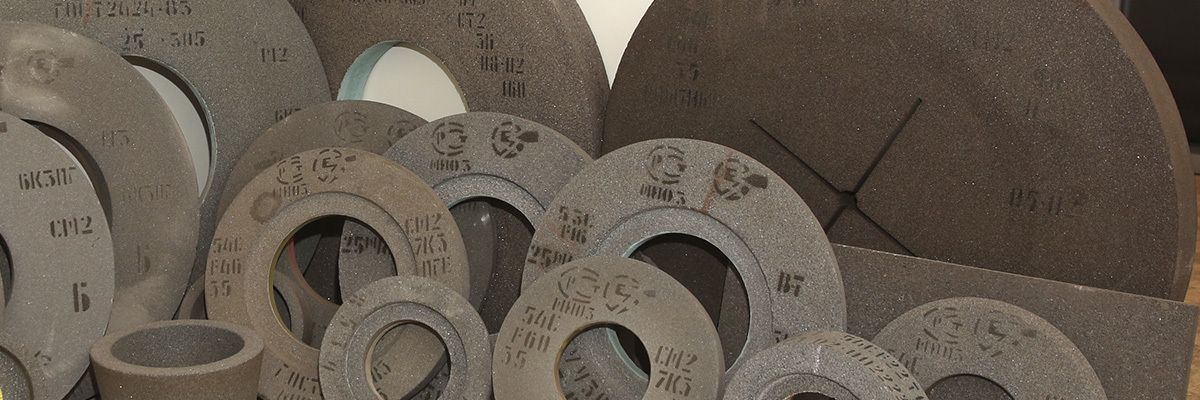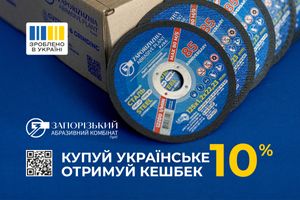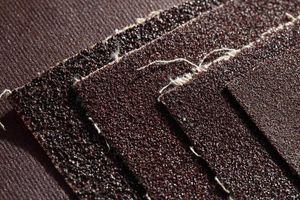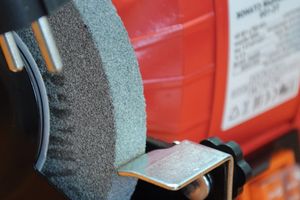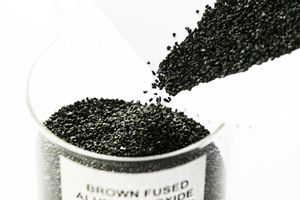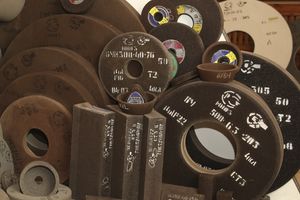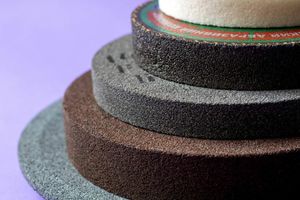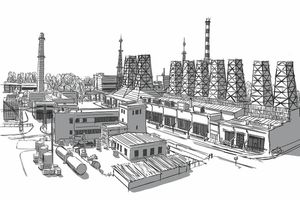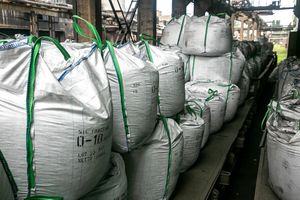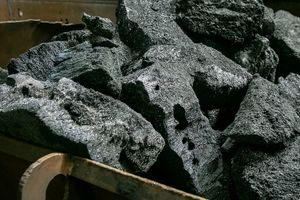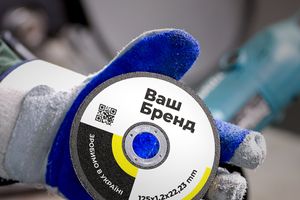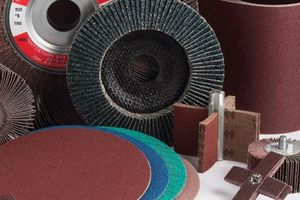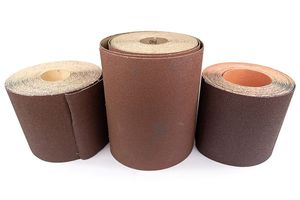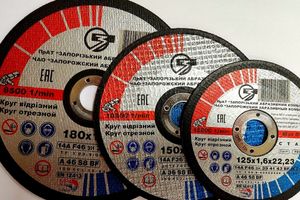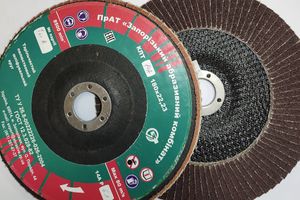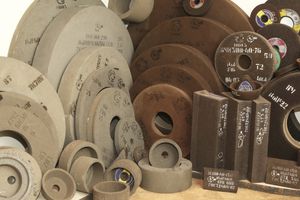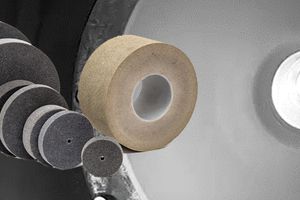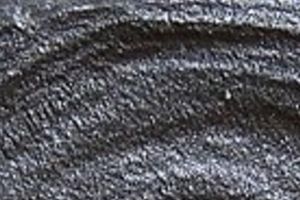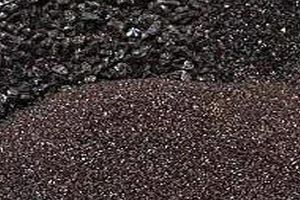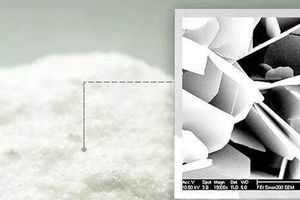A grinding wheel is an important tool in industry and repair. It is used for surface treatment by grinding, polishing and cutting materials. In this article, we will take a detailed look at the various aspects of a grinding wheel, including its construction, materials, types, applications, and key benefits.
Design of the grinding wheel
A grinding wheel consists of two main elements: abrasive grain and binding material. The abrasive grain is responsible for the actual grinding, while the binder material reproduces the structure of the grinding wheel.
Materials for grinding wheels
Different types of materials are used to make abrasives in grinding wheels. Aluminum oxide, silicon carbide and diamond can be noted among the most common materials. Each material has its own characteristics and applications.
Types of grinding wheels
Grinding wheels are classified depending on their shape, size and purpose. The most common types include cutting, grinding and polishing wheels. Each type has its own unique characteristics and applications.
Grinding wheels come in different types, each designed for specific tasks and materials to be processed. Some of the more common types of grinding wheels are listed below:
Aluminum Oxide Grinding Wheels: This type of grinding wheel has great rigidity and durability. They are often used for grinding metal surfaces and other materials.
Silicon Carbide Grinding Wheels: These wheels are more abrasive and wear faster than aluminum oxide. They are effective for processing hard materials such as stone, glass and metal.
Diamond Coated Grinding Wheels: These wheels have the highest abrasiveness and are used for processing the hardest materials such as glass, ceramics, diamonds and stone. They are widely used in industry and repair.
Stainless Steel Grinding Wheels: These wheels are specially designed for machining stainless steel and other high chromium metals. They have high resistance to corrosion and durability.
Wood Sanding Wheels: These wheels have a special design and abrasive composition that makes them ideal for woodworking. They provide clean and smooth sanding without damaging the surface.
Polishing wheels: These wheels have a soft abrasive composition that is designed to polish surfaces after sanding. They provide a high gloss and smooth surface.
These are only some of the types of grinding wheels, there are many more options that can be adapted to different needs and tasks of material processing.
Application of grinding wheels
Grinding wheels have a wide range of applications in various industries, repair and manufacturing. Some of the main applications of grinding wheels are listed below:
Metalworking: Grinding wheels are used to finish metal surfaces, including ferrous and non-ferrous metals. They can remove dirt, oxidation, rust and other defects, and create smooth and shiny surfaces.
Woodworking: Furniture making, carving, wood turning - all these processes involve the use of grinding wheels to finish and bring the surfaces to a smooth and high-quality state.
Glass and ceramic processing: Diamond-coated grinding wheels are often used for processing glass, ceramics, and other brittle materials. They allow you to create precise and smooth edges, as well as cut and shape materials.
Automotive Repair: In the automotive industry, grinding wheels are used to remove paint, repair body defects, polish paintwork, and other automotive repair and restoration tasks.
Tool and machine manufacturing: In tool and machine manufacturing, grinding wheels are used for processing and finishing parts, creating precise geometric shapes and removing irregularities.
Metallurgy and electronics manufacturing: In metallurgy and electronics manufacturing, grinding wheels are used for machining and machining parts, such as cutting and polishing small parts and components.
These are just a few of the main applications of grinding wheels, there are many other areas where they are used for a variety of surface finishing and polishing tasks.
Advantages of using grinding wheels
The use of grinding wheels has numerous advantages that make them an indispensable tool in industry, repair and production. Some of the main benefits of using grinding wheels include:
Efficiency: Grinding wheels allow you to quickly and efficiently process the surfaces of materials, ensuring high productivity of industrial and repair processes.
Accuracy: They allow you to achieve high accuracy and quality of surface treatment, which is especially important in the production of parts and mechanisms.
Versatility: Grinding wheels are available in a variety of types and sizes, allowing them to be used for a variety of tasks and materials, including metals, wood, glass and ceramics.
Versatility: They can be used for a variety of finishing operations, including grinding, polishing, cutting and shaping materials.
Economical: Thanks to durability and high performance, grinding wheels save time and money in production and repair processes.
Finish quality: They allow you to get a high-quality surface finish with a smooth, even and uniform finish.
Ease of use: Many grinding wheels are equipped with special fastening systems that facilitate their installation and replacement, which makes the process of working with them more convenient and efficient.
In general, grinding wheels are an indispensable tool in many fields of industry and repair, thanks to their high performance, efficiency and versatility.
Grinding wheels are an integral part of many production and repair processes. They provide the ability to perform a variety of surface treatment tasks with high quality and efficiency. With the development of technologies and improvement of materials, grinding wheels are becoming more and more versatile and effective tools.
